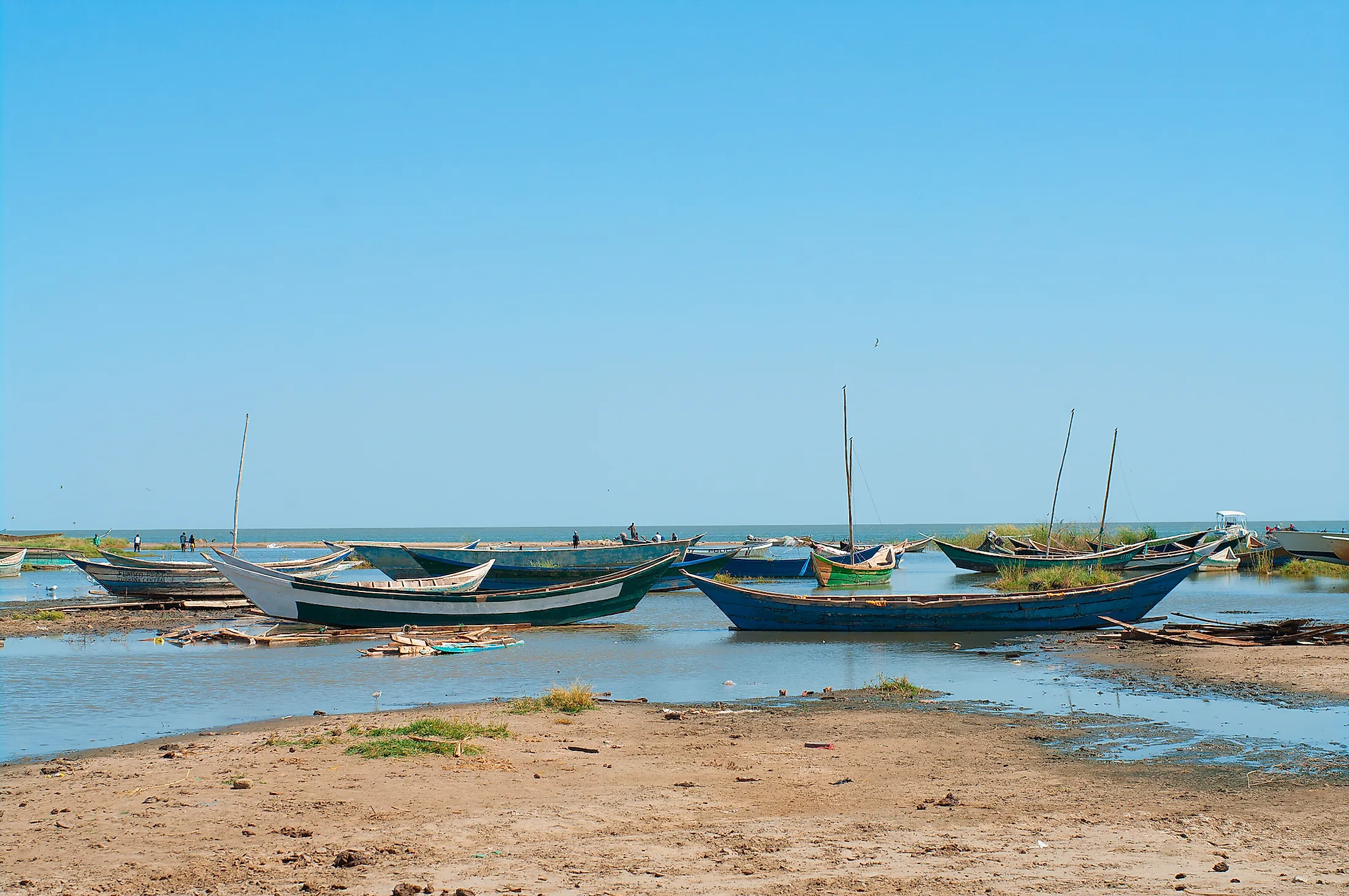
Lake Turkana
Lake Turkana, also known as Lake Rudolf or Jade Sea, is a vast, shallow lake located in the arid part of northern Kenya, with its northern end extending into Ethiopia. It is Africa’s 4th largest lake by surface area and the world’s largest permanent desert lake. Lake Turkana is also Africa’s largest and world’s 4th largest saline lake by volume. The lake is an important water source for the over one million people living in the surrounding arid region and hosts numerous species, including hippos, crocodiles, migratory birds, fish, and flamingos. Lake Turkana National Parks, including the lake itself, are designated World Heritage Sites.
Origin of the Name
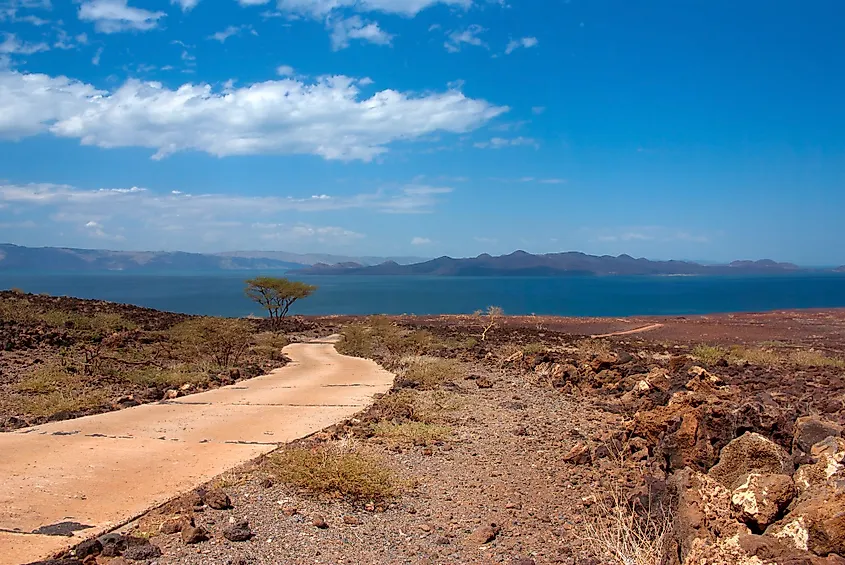
Although well-known to the locals, Hungarian explorer Count Sámuel Teleki de Szék and Austrian naval officer Lieutenant Ludwig Ritter Von Höhnel were the first Europeans to visit Lake Turkana. They named it Lake Rudolf on March 6, 1888, for Rudolf, Austria’s crown prince. Some Europeans referred to the lake as the Jade Sea because of its turquoise color. Several tribes have lived around or near the lake for years, including the Turkanas, Molos, Rendiles, Mursis, Gabbras, and Surmas. The Samburu people referred to the Lake as “Basso Narok” (Black Lake). The name “Rudolf” was used until 1975 when Jomo Kenyatta renamed it “Turkana” after one of the dominant tribes in the region.
Geography
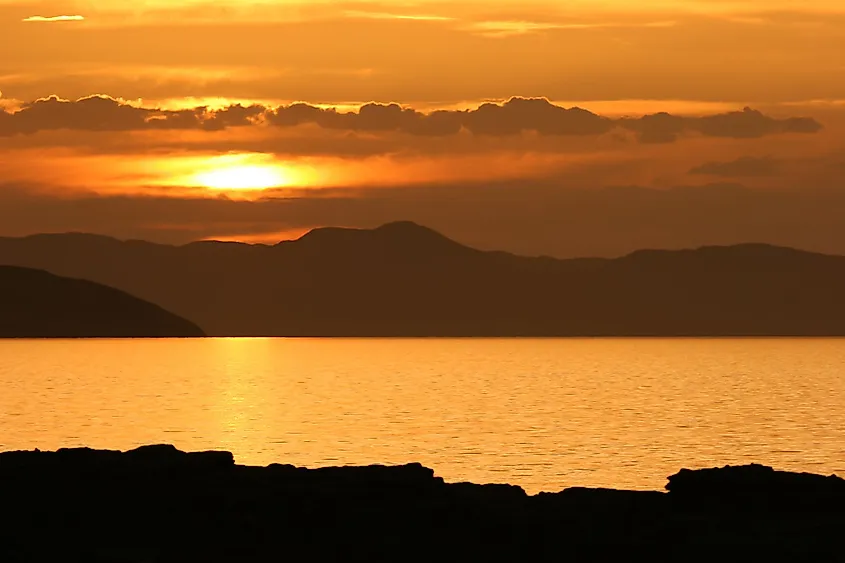
Lake Turkana lies along the Eastern Rift Valley in arid northern Kenya, separated from Lake Logipi on the south by a group of young volcanoes known as the Barriers. The lake is 290 kilometers long in a south-north direction and extends into Ethiopia on the northern end. It is 32 kilometers wide at the widest point. Unlike other African rift valley lakes like Tanganyika, Malawi, and Kivu, Lake Turkana is a shallow lake with a maximum depth of 109 meters and an average depth of 30.2 meters.
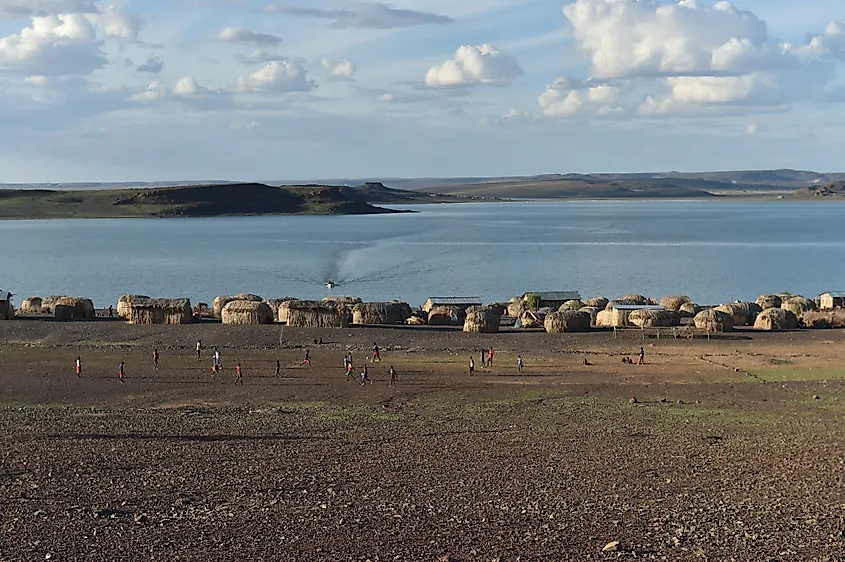
With a surface area of 6,405 square kilometers, Turkana is the world’s largest alkaline and permanent desert lake. However, it is the 4th largest saline lake, with a volume of 203.6 cubic kilometers. It drains an area of approximately 130,860 square kilometers in Kenya and Ethiopia and has a total shoreline of 820 kilometers. The lake gets most of its water from river inflow and a little portion from rain, but lacks an outflow, with most of its water lost through evaporation. The three main rivers flowing into the lake are Omo, Kerio, and Turkwel, with the Omo River contributing about 19 cubic kilometers (90%) of the inflow annually.
Climate
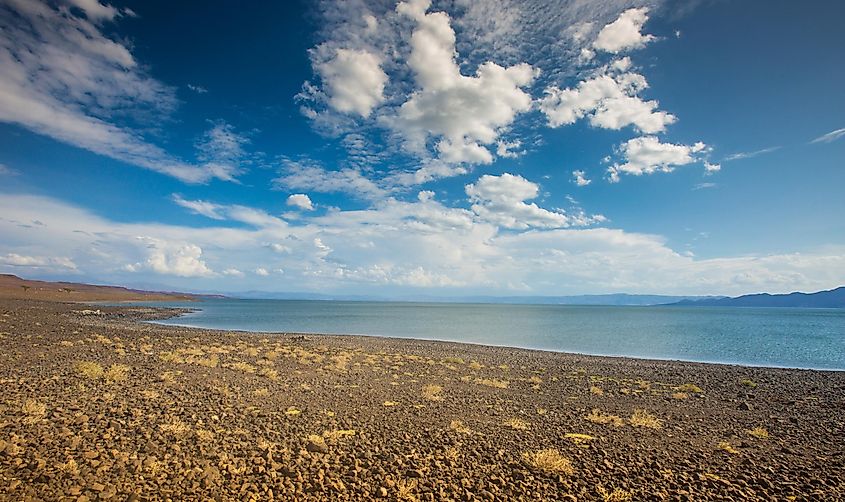
Lake Turkana is located in Kenya’s hot, arid region that often lacks plant life. The region’s climate is arid and characterized by low annual precipitation of less than 250 mm, high temperature, and intense winds. As a result of the intense heat, the area and lake lose more than the precipitation it receives annually through evaporation. The surface water temperature ranges from 27 to 31 degrees Celsius. Owing to the heavy damming along the Omo River, it was feared Lake Turkana’s water levels reduce by two-thirds, causing it to fragment into two smaller lakes. However, a recent UNEP report suggests climate change could lead to heavy rains over the lake’s inflow, which would cause severe flooding.
Flora and Fauna
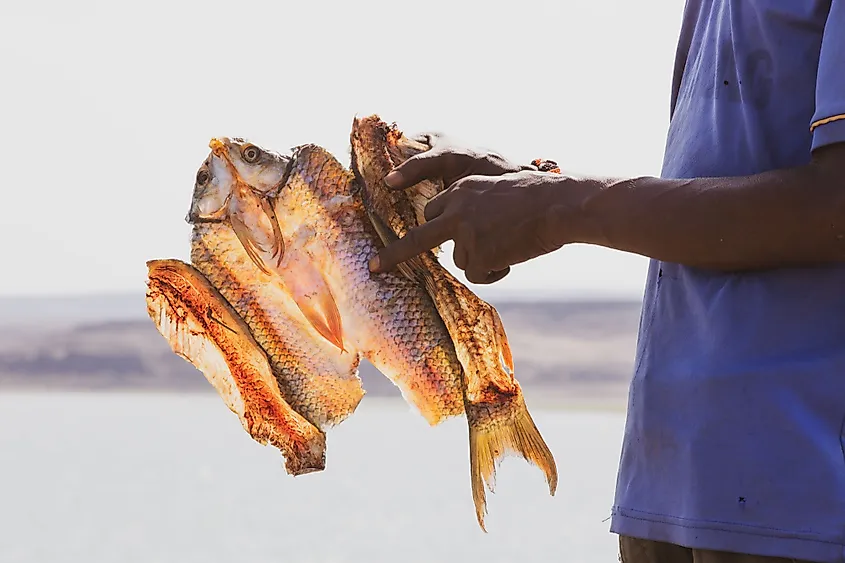
The intense heat and strong winds are unfavorable for plant life, with only thorn bushes as the common vegetation. Dry grasslands can be seen during wet times (March to May) and disappear in the drier months. However, the lake itself has plenty of planktons, including cyanobacteria and microalgae. Turkana has 50 fish species, of which 12 are endemic, including cichlids, barbs, catfish, and robber tetras. Other species include tilapia, Nile perch, African knifefish, and African arowana. The lake is also home to several birds, including the little stint, common sandpiper, wood sandpiper, and white-breasted cormorant. Mammals include giraffes, zebras, rhinos, elephants, and cheetahs.










